Baltic Sea Has Thousands of Shipwrecks
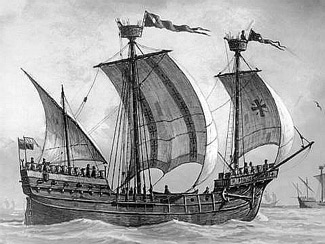
Hanneke Vrome 15th century ship purportedly had treasure aboard. Credit: National Archives
A stretch of the imagination is all you need when scanning a map of the Baltic Sea where you might find a dragon guarding the entrance. Some see it and some don’t. Check out the entrance to the beast’s mouth and follow it just like ships did hundreds of years ago as they sailed to Medieval and Northern European trading posts. If ships got through this part of the Atlantic Ocean that separates the Scandinavian Peninsula from the rest of Continental Europe, they may be heading for ports at Sweden, Finland, Russia, Estonia, Latvia, Lithuania, Poland and Germany. The ships that didn’t make it to port, and encountered disastrous circumstances, are out there somewhere in the Baltic Sea waiting to be discovered. Researchers, scientists, salvers and marine archaeologists say they’ve just touched the tip of the iceberg when searching and discovering some of the thousands of Baltic Sea shipwrecks. There are all kinds to be found such as tankers, freighters, warships, whalers, galleons, cutters, clipper ships and no name vessels centuries old.
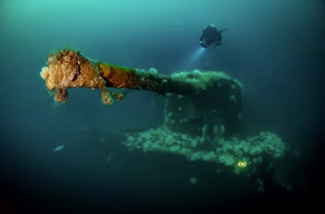
Marine growth on gun emplacement. Credit: Badewanne club
One of the old no names is a Dutch fluyt ( a three-mast merchant vessel) found near the mouth of the Gulf of Finland. A search team named Badewanne discovered the no name find and traced it to be 400-500 years old. Experienced divers then braved the cold, 250-foot-deep water to explore it. They were fortunate to find a 17th century general cargo ship almost completely intact. One of the divers, archaeologist Flanan Huber says: “The Baltic Sea is like a giant ice cold museum which preserves everything that ends up there. It’s not just the wooden construction that’s preserved, bult the cargo as well.”
Another venerable Finland discovery, sailing under the Hanseatic flag (a trading guild of different merchants) could be called a treasure ship. Sunk off Raseborg, Finland, in 1468, it was loaded with honey, textiles and 10,000 guldens (silver coins of the Netherlands). Hanseatic merchants gathered the goods that washed ashore, but no guldens were found. The valuable payload is believed to still be somewhere in the wreckage.
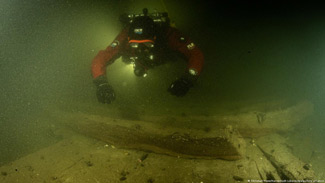
Diver approaches a pile of lumber from a sunken ship. Credit: Badewanne club
A “treasure trove” might be aboard the Karlsruhe, a Nazi cruiser sunk in 1940 off the coast of Poland. Struck by an Allied ship’s torpedoes, it sank with a full cargo in 300 feet of water. Vehicles, guns, gas masks, lifejackets and other military gear was salvaged from the wreck. When found, no one knew what was in the many crates with no labels. It was suggested it might have been valuable stolen property the Germans kept after their raids on weak countries. The crates were given to the local government which never revealed their contents.
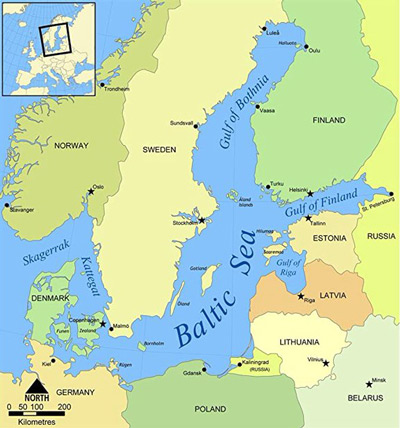
Map of Baltic Sea. Can you find a dragon? Credit: Iconic Arts LLC
During WWII, Nazi Germany reclaimed all of the southern shore and much of the eastern shore when they occupied Poland and the Baltic States. But Allied forces gained it back and in frigid waters of 1945, the Baltic Sea became a mass grave for drowned passengers on torpedoed refugee ships. The sinking of the Wilhelm Gustloff by the Russians remains one of the worst maritime disasters of all time, killing vast numbers of passengers and 1,200 German soldiers. In 2005, Russian divers and scientists found the Gustloff, along with other ships, airplanes and WWII paraphernalia.
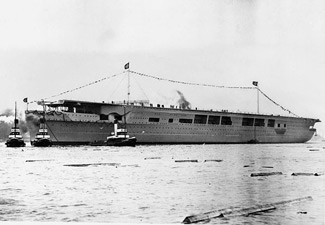
“Hitler’s Ship” The German aircraft carrier Graf zeppelin. Credit: National Archives
When a British oil company, searching for drilling sites, came upon the remains of a bombed out wreck, they didn’t realize they had found “Hitler’s aircraft carrier” built especially at Der Furer’s request in 1936. Named Graf Zepplin (there is also a Graf Zepplin blimp) after its designer Count Ferdinand Van Zepplin, the carrier was found in 2006 near Gdansk, Poland. The 869-foot warship, bombed out by target practice and then sunk by explosives, was equipped with 87 guns and a hull of heavy steel armor. She could hold 42 airplanes including fighters and bombers. Set to sail except for a few scarce parts, the 33,500-ton vessel was towed to the Baltic Sea, left in dry dock and captured by the Russians who sank her with additional dynamite to get through the bulletproof armor.
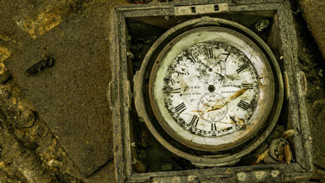
Diver found this chronometer still in fair condition. Credit: Finnish Heritage Agency
Nicknamed Graveyard of Shipwrecks, the expansive sea offers a lot more as mentioned previously. It’s a smorgasbord of wrecks. Divers love them even though they face dark, cold, brackish water. Wearing dry suits for warmth and breathing special gases so they can go deeper and stay longer, the technical divers (called “tech” divers) are brave. They photograph the wrecks and retrieve artifacts which they donate to local museums. Viking discoveries are given to the Viking Ship Museum in Oslo, Norway.
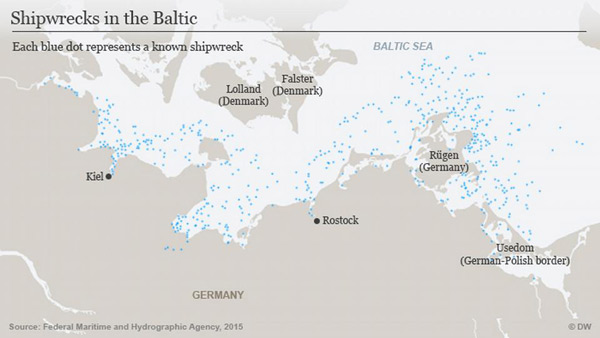
The Baltic Sea contains thousands of shipwrecks (see blue dots) from eight countries. Credit: Iconic Arts LLC
The Baltic Sea faces many challenges including pollution from chemical runoff on farms, excess nutrients such as algae, and climate change. Many organizations have been formed throughout all eight countries to confront these problems. The Baltic Sea remains a unique one-of-a-kind domain like no other in the world and it must continue to be protected.
Author: Ellsworth Boyd
Ellsworth Boyd, Professor Emeritus, College of Education, Towson University, Towson, Maryland, pursues an avocation of diving and writing. He has published articles and photo’s in every major dive magazine in the US., Canada, and half a dozen foreign countries. An authority on shipwrecks, Ellsworth has received thousands of letters and e-mails from divers throughout the world who responded to his Wreck Facts column in Sport Diver Magazine. When he’s not writing, or diving, Ellsworth appears as a featured speaker at maritime symposiums in Los Angeles, Houston, Chicago, Ft. Lauderdale, New York and Philadelphia. “Romance & Mystery: Sunken Treasures of the Lost Galleons,” is one of his most popular talks. A pioneer in the sport, Ellsworth was inducted into the International Legends of Diving in 2013.
4 Comments
Submit a Comment
All Rights Reserved © | National Underwater and Marine Agency
All Rights Reserved © | National Underwater and Marine Agency
Web Design by Floyd Dog Design
Web Design by Floyd Dog Design

Thank you Mr. Boyd for this informative article. I admit to being very naive about shipwrecks in the Baltic Sea. My only knowledge prior to this writing was about the sinking of the Danish warship Vasa in 1628. Thanks again for the enlightenment. I look forward to your next article!
Thank you for our kind words. The Vasa is about all I knew too. I was amazed when I got deep into the research of the Baltic Sa wrecks. It’s tough diving, but they do it. Very interesting discoveries.
Interesting article even for a native Swede. The Vasa is a Swedish ship that sank in Stockholm harbour at at time when Danes were the mortal enemy. Calling it Danish would have gotten you Keel-hauled at the time….
Vasa was not a danish warship, it was swedish. and it was build all wrong and sank before it left the harbour. It is on display in Stockholm and is amazing.